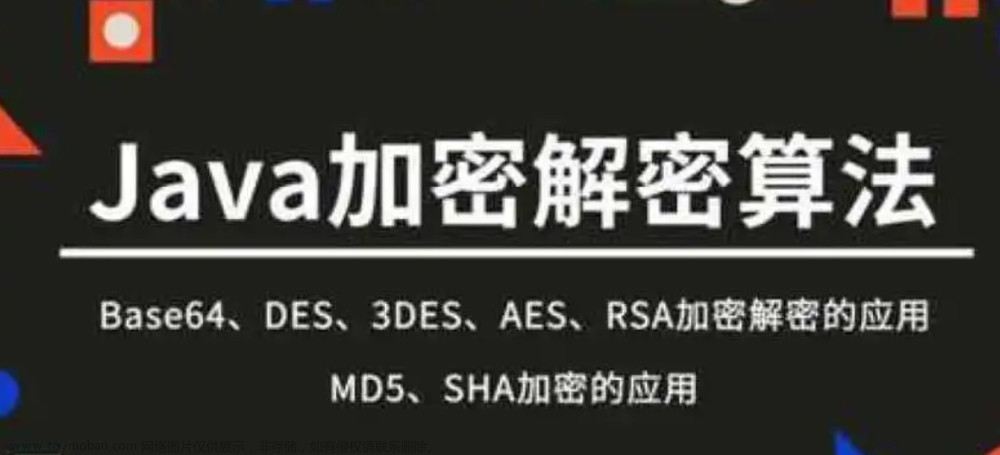常用的 Token 加密算法包括对称加密算法和非对称加密算法。对称加密算法使用相同的密钥来进行加密和解密,加密速度快,但是密钥传输和管理较为复杂。非对称加密算法使用一对公钥和私钥来进行加密和解密,加密速度慢,但是密钥传输和管理较为简单,且具有更好的安全性。
下面分别介绍常用的对称加密算法和非对称加密算法,并提供相应的 Java 代码示例。

对称加密算法
AES
AES(Advanced Encryption Standard)是一种高级加密标准,是一种对称加密算法。AES 可以使用不同的密钥长度,包括 128 位、192 位和 256 位。AES 加密速度较快,安全性较高,已得到广泛应用。下面是使用 AES 进行加密和解密的 Java 代码示例:
import javax.crypto.Cipher;
import javax.crypto.spec.SecretKeySpec;
import java.util.Base64;
public class AESUtils {
private static final String TRANSFORMATION = "AES/ECB/PKCS5Padding";
private static final String ALGORITHM = "AES";
public static String encrypt(String plainText, String key) throws Exception {
SecretKeySpec secretKeySpec = new SecretKeySpec(key.getBytes(), ALGORITHM);
Cipher cipher = Cipher.getInstance(TRANSFORMATION);
cipher.init(Cipher.ENCRYPT_MODE, secretKeySpec);
byte[] encryptedBytes = cipher.doFinal(plainText.getBytes());
return Base64.getEncoder().encodeToString(encryptedBytes);
}
public static String decrypt(String cipherText, String key) throws Exception {
SecretKeySpec secretKeySpec = new SecretKeySpec(key.getBytes(), ALGORITHM);
Cipher cipher = Cipher.getInstance(TRANSFORMATION);
cipher.init(Cipher.DECRYPT_MODE, secretKeySpec);
byte[] cipherBytes = Base64.getDecoder().decode(cipherText);
byte[] decryptedBytes = cipher.doFinal(cipherBytes);
return new String(decryptedBytes);
}
}
在上面的示例代码中,encrypt 方法使用 AES 算法对明文进行加密,decrypt 方法使用 AES 算法对密文进行解密。其中,TRANSFORMATION 和 ALGORITHM 分别指定了加密算法和算法模式。在加密和解密的过程中,需要使用相同的密钥来进行加密和解密。
DES
DES(Data Encryption Standard)是一种经典的对称加密算法,使用 56 位密钥进行加密和解密。由于密钥长度较短,安全性较低,已逐渐被其它对称加密算法所取代。下面是使用 DES 进行加密和解密的 Java 代码示例:
import javax.crypto.Cipher;
import javax.crypto.spec.DESKeySpec;
import javax.crypto.spec.IvParameterSpec;
import javax.crypto.spec.SecretKeySpec;
import java.util.Base64;
public class DESUtils {
private static final String TRANSFORMATION = "DES/CBC/PKCS5Padding";
private static final String ALGORITHM = "DES";
private static final String IV = "12345678";
public static String encrypt(String plainText, String key) throws Exception {
DESKeySpec desKeySpec = new DESKeySpec(key.getBytes());
SecretKeySpec secretKeySpec = new SecretKeySpec(desKeySpec.getKey(), ALGORITHM);
Cipher cipher = Cipher.getInstance(TRANSFORMATION);
IvParameterSpec ivParameterSpec = new IvParameterSpec(IV.getBytes());
cipher.init(Cipher.ENCRYPT_MODE, secretKeySpec, ivParameterSpec);
byte[] encryptedBytes = cipher.doFinal(plainText.getBytes());
return Base64.getEncoder().encodeToString(encryptedBytes);
}
public static String decrypt(String cipherText, String key) throws Exception {
DESKeySpec desKeySpec = new DESKeySpec(key.getBytes());
SecretKeySpec secretKeySpec = new SecretKeySpec(desKeySpec.getKey(), ALGORITHM);
Cipher cipher = Cipher.getInstance(TRANSFORMATION);
IvParameterSpec ivParameterSpec = new IvParameterSpec(IV.getBytes());
cipher.init(Cipher.DECRYPT_MODE, secretKeySpec, ivParameterSpec);
byte[] cipherBytes = Base64.getDecoder().decode(cipherText);
byte[] decryptedBytes = cipher.doFinal(cipherBytes);
return new String(decryptedBytes);
}
}
在上面的示例代码中,encrypt 方法使用 DES 算法对明文进行加密,decrypt 方法使用 DES 算法对密文进行解密。其中,TRANSFORMATION 和 ALGORITHM 分别指定了加密算法和算法模式,IV 则指定了加密算法的初始向量。在加密和解密的过程中,需要使用相同的密钥来进行加密和解密。
非对称加密算法
RSA
RSA(Rivest–Shamir–Adleman)是一种非对称加密算法,使用公钥加密,私钥解密。RSA 的安全性基于质因数分解问题,即将一个大的合数分解成其质数因子的问题。RSA 需要生成一对公钥和私钥,其中公钥可以公开,私钥需要保密。下面是使用 RSA 进行加密和解密的 Java 代码示例:
import java.nio.charset.StandardCharsets;
import java.security.KeyPair;
import java.security.KeyPairGenerator;
import java.security.PrivateKey;
import java.security.PublicKey;
import java.security.spec.PKCS8EncodedKeySpec;
import java.security.spec.X509EncodedKeySpec;
import java.util.Base64;
import javax.crypto.Cipher;
public class RSAUtils {
private static final String ALGORITHM = "RSA";
public static KeyPair generateKeyPair(int keySize) throws Exception {
KeyPairGenerator keyPairGenerator = KeyPairGenerator.getInstance(ALGORITHM);
keyPairGenerator.initialize(keySize);
return keyPairGenerator.generateKeyPair();
}
public static String encrypt(String plainText, PublicKey publicKey) throws Exception {
Cipher cipher = Cipher.getInstance(ALGORITHM);
cipher.init(Cipher.ENCRYPT_MODE, publicKey);
byte[] encryptedBytes = cipher.doFinal(plainText.getBytes(StandardCharsets.UTF_8));
return Base64.getEncoder().encodeToString(encryptedBytes);
}
public static String decrypt(StringcipherText, PrivateKey privateKey) throws Exception {
Cipher cipher = Cipher.getInstance(ALGORITHM);
cipher.init(Cipher.DECRYPT_MODE, privateKey);
byte[] cipherBytes = Base64.getDecoder().decode(cipherText);
byte[] decryptedBytes = cipher.doFinal(cipherBytes);
return new String(decryptedBytes, StandardCharsets.UTF_8);
}
public static PublicKey getPublicKey(byte[] keyBytes) throws Exception {
X509EncodedKeySpec keySpec = new X509EncodedKeySpec(keyBytes);
return KeyFactory.getInstance(ALGORITHM).generatePublic(keySpec);
}
public static PrivateKey getPrivateKey(byte[] keyBytes) throws Exception {
PKCS8EncodedKeySpec keySpec = new PKCS8EncodedKeySpec(keyBytes);
return KeyFactory.getInstance(ALGORITHM).generatePrivate(keySpec);
}
}
在上面的示例代码中,generateKeyPair 方法用于生成一对公钥和私钥,encrypt 方法使用公钥对明文进行加密,decrypt 方法使用私钥对密文进行解密。在加密和解密的过程中,需要使用相同的公钥和私钥。在获取公钥和私钥的过程中,需要指定相应的密钥格式。
ECC
ECC(Elliptic Curve Cryptography)是一种基于椭圆曲线数学问题的非对称加密算法。ECC 相对于 RSA 等传统的非对称加密算法来说,具有更高的加密强度和更短的密钥长度,因此在一些资源受限或对安全性要求较高的场景中得到了广泛应用。下面是使用 ECC 进行加密和解密的 Java 代码示例:
import java.security.KeyPair;
import java.security.KeyPairGenerator;
import java.security.PrivateKey;
import java.security.PublicKey;
import java.security.Signature;
import java.util.Base64;
public class ECCUtils {
private static final String ALGORITHM = "EC";
private static final String SIGNATURE_ALGORITHM = "SHA256withECDSA";
public static KeyPair generateKeyPair() throws Exception {
KeyPairGenerator keyPairGenerator = KeyPairGenerator.getInstance(ALGORITHM);
return keyPairGenerator.generateKeyPair();
}
public static String sign(String plainText, PrivateKey privateKey) throws Exception {
Signature signature = Signature.getInstance(SIGNATURE_ALGORITHM);
signature.initSign(privateKey);
signature.update(plainText.getBytes());
byte[] signedBytes = signature.sign();
return Base64.getEncoder().encodeToString(signedBytes);
}
public static boolean verify(String plainText, String signatureText, PublicKey publicKey) throws Exception {
Signature signature = Signature.getInstance(SIGNATURE_ALGORITHM);
signature.initVerify(publicKey);
signature.update(plainText.getBytes());
byte[] signatureBytes = Base64.getDecoder().decode(signatureText);
return signature.verify(signatureBytes);
}
}
在上面的示例代码中,generateKeyPair 方法用于生成一对公钥和私钥,sign 方法使用私钥对明文进行签名,verify 方法使用公钥对签名进行验证。在签名和验证的过程中,需要使用相同的公钥和私钥。文章来源:https://www.toymoban.com/news/detail-451291.html
小结
以上是常用的 Token 加密算法的 Java 代码示例,包括对称加密算法 AES 和 DES,以及非对称加密算法 RSA 和 ECC。在实际使用中,需要根据具体的场景和需求选择合适的加密算法,并进行适当的参数配置和密钥管理,以保障数据的安全性和可靠性。文章来源地址https://www.toymoban.com/news/detail-451291.html
到了这里,关于Token 常用的加解密算法的文章就介绍完了。如果您还想了解更多内容,请在右上角搜索TOY模板网以前的文章或继续浏览下面的相关文章,希望大家以后多多支持TOY模板网!







